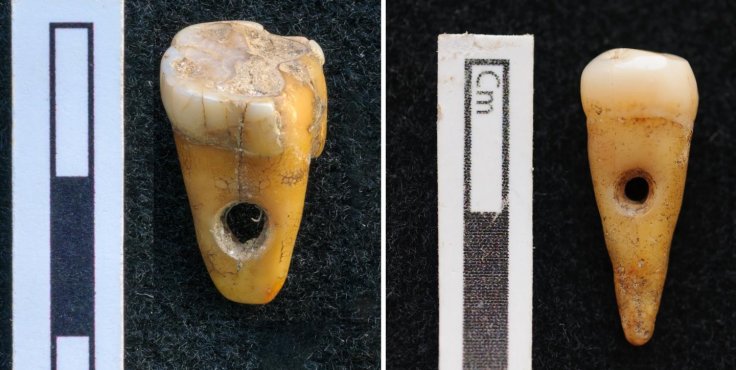During an excavation at the Neolithic site of Çatalhöyük in Turkey archaeologists discovered two 8,500-year-old human teeth. But the uniqueness of these ancient remains got revealed after scientists carried out macroscopic, microscopic and radiographic analyses on these teeth.
The researchers stated that the two ancient human teeth had been used as pendants in a necklace or bracelet. It should be noted that the team of archaeologists, never documented this practice before in the prehistoric Near East. As per the researchers, this new finding also suggested that the human teeth were permeating with profound symbolic meaning for the people who used to wear them.
The excavation at Neolithic site

Archaeologists, who conducted the excavation between 2013 and 2015, unearth three 8,500-year-old-teeth. As per the findings, these teeth appeared to have been intentionally drilled to be worn as beads in a necklace or bracelet. Further analysis revealed that two of the teeth had indeed been used as beads or pendants, researchers stated in the study, which was recently published in the Journal of Archaeologica.
One of the researchers of this study, Scott Haddow, who is an archaeologist at University of Copenhagen stated that "Not only had the two teeth been drilled with a conically shaped microdrill similar to those used for creating the vast amounts of beads from animal bone and stone that we have found at the site, but they also showed signs of wear corresponding to extensive use as ornaments in a necklace or bracelet."
He also mentioned that the evidence suggested that these two ancient teeth pendants were probably extracted from two mature individuals' autopsy. As per the research, the wear on the teeth's chewing surfaces indicated that those ancient people would have been between 30-50 years old.
Previously discovered human teeth
It should be mentioned that earlier archaeologists have discovered human teeth used for ornamental purposes at European sites from the Upper Palaeolithic and the Neolithic but those findings were never documented which made the recent finding extremely rare and surprising.
Scott Haddow explained that "Given the amount of fragmentary skeletal material often circulating within Neolithic sites, not least at Çatalhöyük where secondary burial practices associated with the display of human skulls were frequent, what is most interesting is the fact that human teeth and bone were not selected and modified more often."









